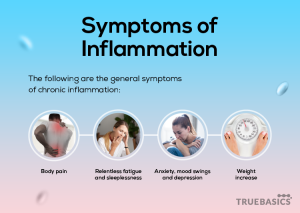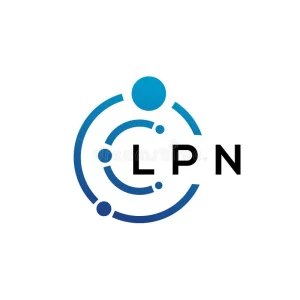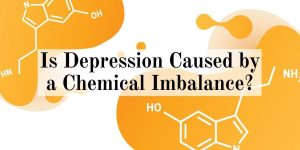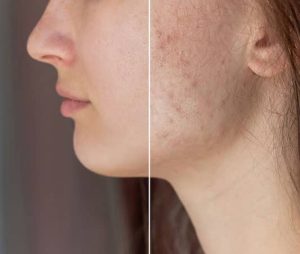Chin filler treatment has become increasingly popular over the years as it is a non-surgical way to enhance the appearance of the chin. With this treatment, you can achieve a more defined and symmetrical look without undergoing invasive surgery. However, one common concern for those considering this treatment is bruising.
Bruising after a chin filler treatment can be unsightly and uncomfortable, causing many people to avoid the procedure altogether. As we age, our skin loses elasticity and volume, resulting in the formation of wrinkles, fine lines and sagging. Fortunately, dermal fillers Cleveland offer a non-surgical option to restore youthfulness and vitality to your appearance. If you’re looking for a reputable provider of dermal filler treatments in Cleveland, Ohio, you’ve come to the right place. Fortunately, there are steps you can take to reduce your risk of bruising after your chin filler treatment. In this article, we’ll share some helpful tips on how to avoid bruising so that you can enjoy the results of your chin filler with confidence and comfort.
Pre-Treatment Preparation:
Before your chin filler appointment, there are a few steps you can take to minimize the risk of bruising.
- Two weeks before your appointment, stop taking any blood-thinning medications or supplements such as aspirin or fish oil. These can increase bleeding and bruising. If you have been prescribed these medications for medical reasons, consult with your doctor first.
- Additionally, avoid consuming alcohol at least 24 hours before your appointment as it can also increase the risk of bruising. You should also avoid any strenuous exercise or activities that can cause increased blood flow to the face immediately after treatment.
- On the day of your appointment, arrive well-hydrated and make sure to eat a healthy meal beforehand. Applying ice packs to the treated area before and after the procedure can help constrict blood vessels and reduce swelling, leading to less bruising.
- Finally, be sure to follow all post-treatment instructions provided by your healthcare provider including avoiding touching or rubbing the treated area and avoiding makeup application for several hours after treatment.
By following these pre-treatment preparation steps, you can help minimize bruising after a chin filler treatment.
During treatment:
During the chin filler treatment, patients can expect their face to be numbed with a topical anesthetic cream or injected with a local anesthetic.
- Once the area is numb, the doctor injects small amounts of hyaluronic acid filler into strategic points on the chin to achieve the desired shape and contour. Patients may experience some discomfort during these injections, but it should not be excruciating.
- Afterward, there may be slight redness, swelling, and bruising around the injection sites. However, this is normal and should subside within a few days. To minimize bruising, patients are advised to avoid alcohol and blood-thinning medications before their treatment session. Additionally, applying ice packs or cold compresses to the treated area can help reduce swelling and discomfort.
Overall, chin filler treatments are relatively quick procedures that typically take less than 30 minutes to complete. With proper aftercare instructions from your doctor, you can ensure that your recovery process is smooth and successful.
Post-Treatment Care:
After getting a chin filler treatment, swelling and bruising are common side effects that can last for a few days. To minimize swelling, it is recommended to apply a cold compress on the treated area for 15-20 minutes every hour. This will help reduce inflammation and prevent excessive swelling.
To avoid bruising, avoid taking blood-thinning medications such as aspirin, ibuprofen or fish oil supplements before the treatment as they can increase the risk of bruising. Many people opt for Botox between eyes as it is a quick and relatively painless procedure with minimal downtime. It can take up to two weeks for results to fully show, but they typically last anywhere from three to six months before another injection is needed. Additionally, avoid alcohol consumption 24 hours prior to the treatment as this can also increase the risk of bruising.
After the procedure, avoiding strenuous physical activities such as heavy lifting or exercise for at least 24 hours is recommended. Also, try to sleep with your head elevated for a few nights to allow better blood flow and reduce any potential swelling in your face. By following these simple steps, you can ensure minimal swelling and bruising after your chin filler treatment.
Supplemental Treatments:
Bruising is a common side effect of chin filler treatments, but there are several supplemental treatments available to reduce its appearance after the fact.
- One option is arnica, a homeopathic remedy that has been used for centuries to reduce bruising and swelling. Arnica can be taken orally or applied topically in the form of creams or gels.
- Another option is vitamin K cream, which has been shown to promote clotting and reduce the severity of bruises. Vitamin K can also be found in leafy green vegetables and supplements. Applying a cold compress to the affected area can also help reduce swelling and discoloration by constricting blood vessels.
For more severe bruising, laser treatment or other cosmetic procedures may be necessary. However, it’s important to consult with a healthcare professional before attempting any supplemental treatments to ensure they are safe and effective for individual needs.
Conclusion:
In conclusion, healing and recovery after any cosmetic procedure takes time and patience. It is important to follow the aftercare instructions provided by your medical professional to ensure a smooth healing process. In addition, avoiding certain activities such as strenuous exercise or alcohol consumption can aid in the prevention of bruising.
It is also crucial to communicate with your medical professional if you experience any unusual symptoms during the healing process. They can offer advice on how best to manage discomfort or swelling. Remember that every individual’s healing process may differ, so it is essential not to compare your progress with others.
In summary, taking care of yourself both physically and mentally during the post-treatment period can aid in a successful recovery. With proper aftercare and communication with your medical professional, you can enjoy the benefits of cosmetic procedures while minimizing any potential side effects like bruising.











Be First to Comment